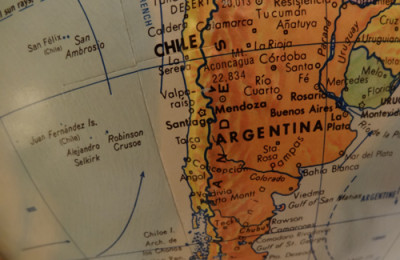
David Worsfold
How do they do it?
Argentina came back into the international debt markets last month with a substantially over-subscribed issue. That’s after 15 years of exile following its $81bn default in 2001 and its subsequent further partial default of $30bn in July 2014, as it struggled more than a decade on to clear up the mess from 2001.
Argentina is a serial defaulter. The partial default of July 2014 was its eighth since modern international bond markets were developed. The new issue was no ‘toe-in-the-water’ experiment either to see how the markets might react. It was several times larger than the debt issues of other returning defaulters, such as Greece which came back in 2014 with a modest €3bn issue.
This was a bold statement of intent showing a determination on the part of new President Mauricio Macri’s pro-market government to draw a line under the 2001 and 2014 defaults. The government plans to use proceeds from the offering to pay back those still sitting on the defaulted debt following the settlement of a long-running legal dispute earlier this year. Morgan Stanley estimates Argentina will need to raise US$20bn in external debt in 2016 to complete this process and make a dent in the country’s chronic internal debt problems, making it the largest emerging-market sovereign issuer this year.
So, how did Argentina’s initial US$15bn issue attract bids of around US$65bn, especially in the face of howls of skepticism from Wall Street about its prospects?
It must largely be about the quest for yield in today’s low return world, with many institutional investors prepared to take greater risks in order to seek out that little extra yield.
Not that the returns on this Argentine issue are overly generous.
The banks underwriting the deal – including Deutsche Bank – anticipate a yield on the new 10-year Argentine debt between 7.5% and 7.625%, below the levels sceptics were saying would be required to get traction, with shorter-dated three- and five-year bonds yielding about 6.4% and 7% respectively. The 30-year bond is expected to yield about 8%.
But institutions were clearly more than happy with these yields judging by their enthusiasm for the issue. They must think it worth the risk – and it really is a risky game they are playing. Moody’s has upgraded Argentina’s credit rating following the settlement with the holdout investors caught by the earlier defaults and as an expression of confidence in President Macri’s economic policies. However, its B3 rating still leaves the country’s debt in “junk” territory.
With Argentina’s record of political and economic volatility – it is currently facing a shrinking GDP and inflation exceeding 30% – the new government’s survival isn’t guaranteed. Given the track record of defaults, a change of government might easily bring a swift change of attitude to international debt.
Then there is the risk of contagion from other shaky Latin American economies. The region’s largest economy Brazil is struggling with a deepening recession and a political crisis of its own; Puerto Rico is facing an almost insoluble debt crisis; and Venezuela is lurching into chaos and economic meltdown.
Buying into any LatAm sovereign debt at the moment clearly has risk written all over it but with few issues of a similar size offering half-decent yields, it is a risk many clearly see as worth taking. Indeed, such has sentiment swung around in just a couple of months that those analysts talking down the issue’s prospects of success are now anticipating further Argentine issues. The government has tried to dampen down expectations by saying it won’t be coming back to the market until 2017.
Whether they are tempted to move sooner or not, playing in the LatAm sovereign debt market is going to be all about timing: when to go in and when to get out. It means keeping close to the political and economic uncertainties that constantly grip the region.
It may look smart to enter now with President Macri making all the right noises (at least in the eyes of external investors) but less so if investors are still holding the debt when the next default comes. And it will. It is in the Argentine DNA.
